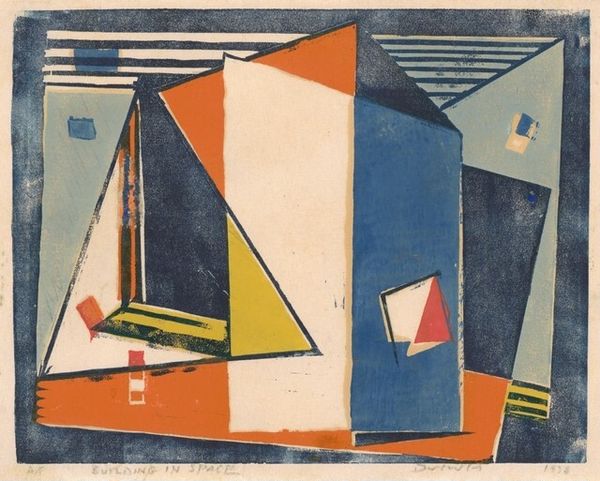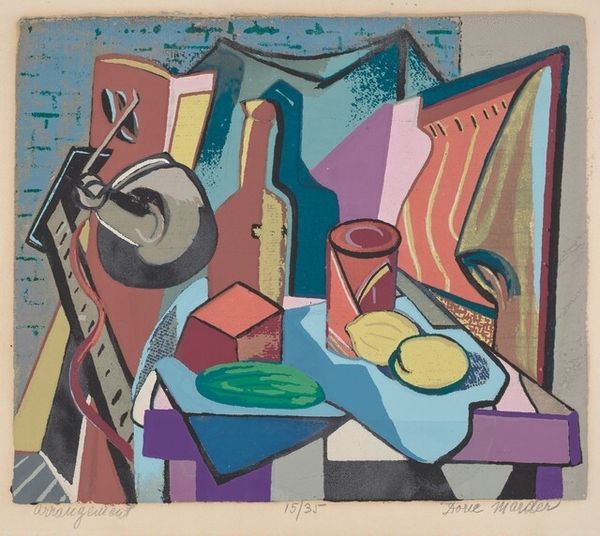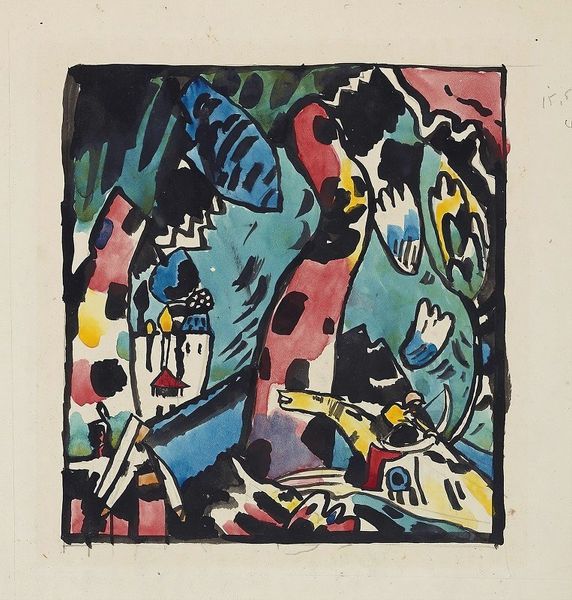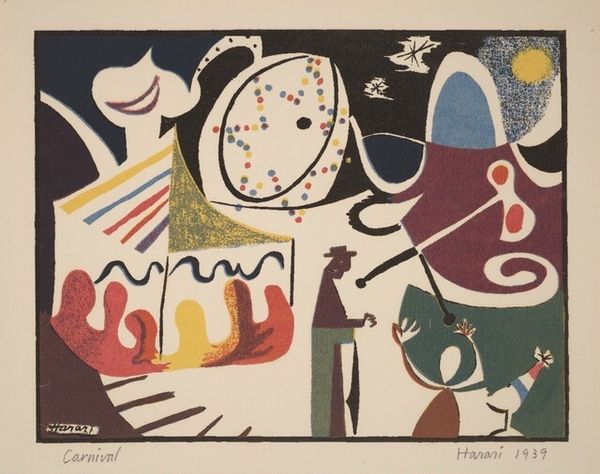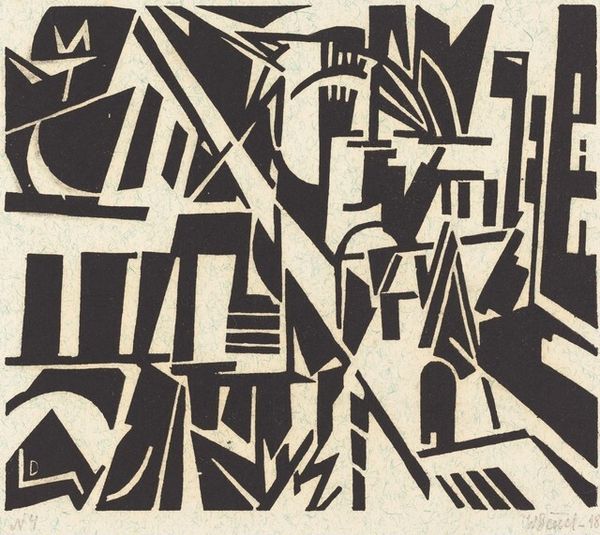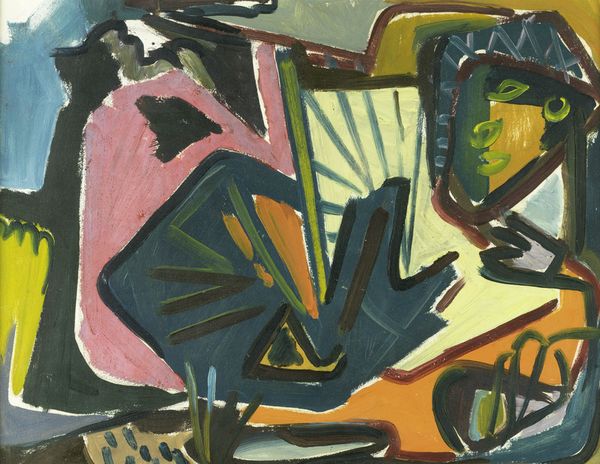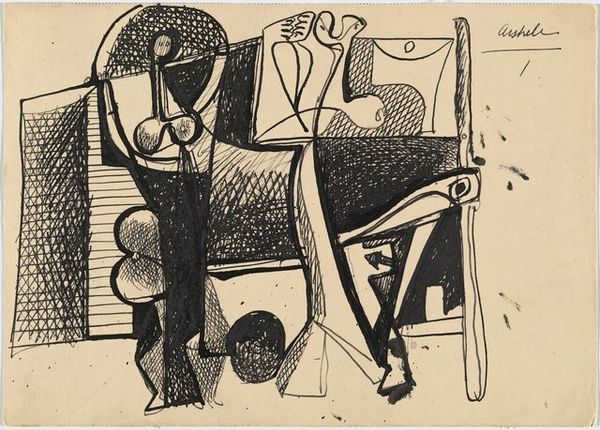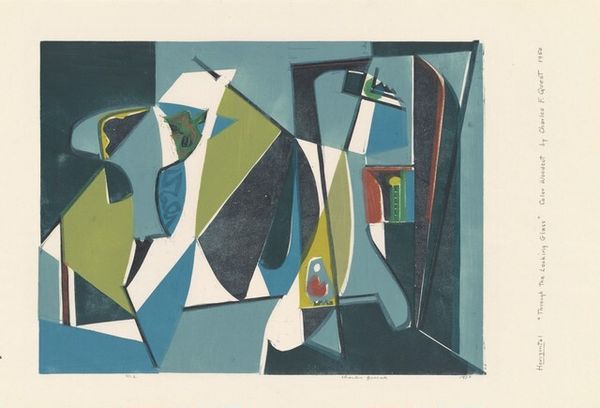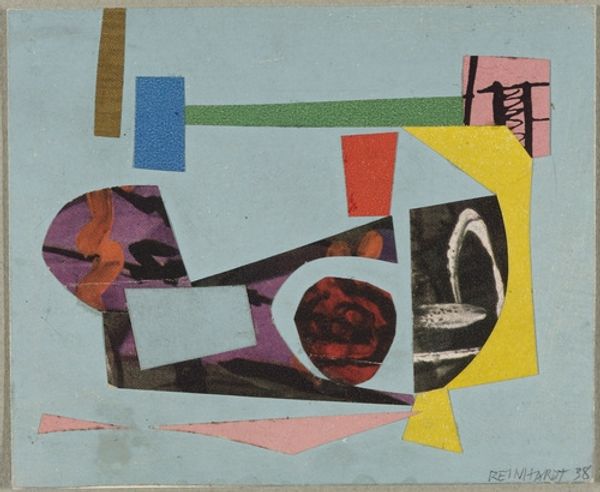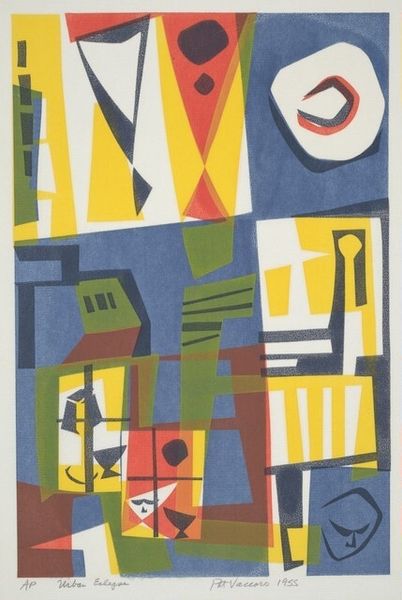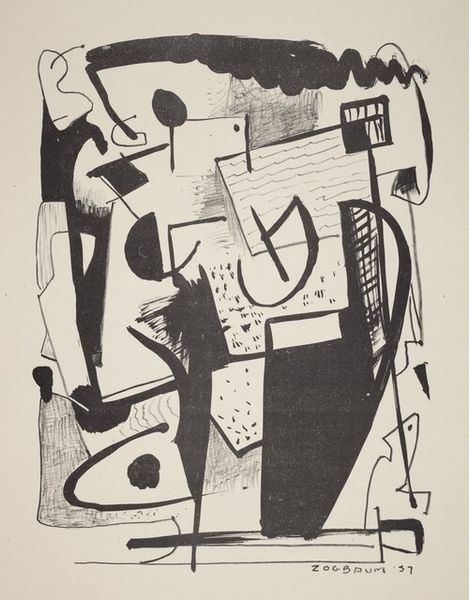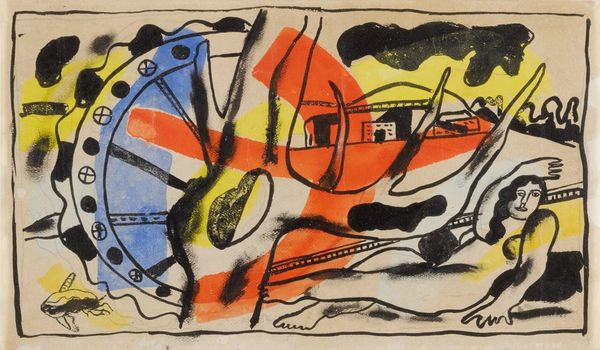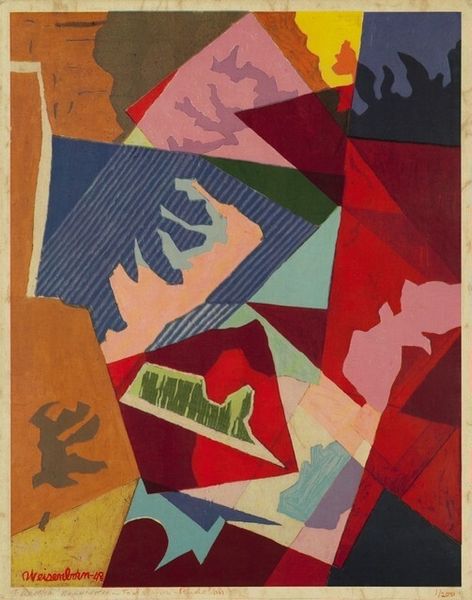
graphic-art, print, woodcut
#
graphic-art
# print
#
geometric
#
woodcut
#
abstraction
#
modernism
Dimensions: image: 20.5 x 28.5 cm (8 1/16 x 11 1/4 in.) sheet: 25.5 x 34.5 cm (10 1/16 x 13 9/16 in.)
Copyright: National Gallery of Art: CC0 1.0
Curator: Let’s turn our attention to Louis Schanker’s 1938 woodcut print, "Abstraction with Heart." What are your first thoughts on this piece? Editor: Well, my initial feeling is playful confusion! It's got this raw, almost childlike energy but with an intellectual twist. It makes me want to decode some hidden message buried within those angular shapes. What a delicious, unsettling invitation. Curator: Unsettling is a good word. Considering the socio-political climate of 1938, as the world edged closer to war, abstraction became a powerful visual language. Artists like Schanker were engaging with the idea of fragmented realities, expressing anxieties about societal upheaval through broken forms and disrupted perspectives. Editor: Right! You can almost feel that anxiety simmering beneath the surface. Though at first glance, the palette looks light, when you really dig into the jagged shapes and odd juxtapositions, there is certainly this fractured sensibility that feels reflective of those pre-war tensions. Tell me more about this so-called "heart," or lack thereof… Curator: Note that this isn’t necessarily about sentimental love but perhaps speaks more to the core of human emotion—perhaps vulnerability—and is intentionally deconstructed. Also, by calling it "abstraction," Schanker rejects representational art—art that mirrors reality. Editor: Yes, he is refusing to make art "comfortable." I find that bold and strangely hopeful. Curator: Given Schanker’s Jewish background and the rise of fascism in Europe, such choices took on heightened significance. These weren’t just formal experiments but quiet acts of resistance. Editor: That just deepens my read of playful confusion; it reminds me to consider what appears casual and spontaneous in relationship to an intense time of world-historical conflict. What an invitation. Curator: It is an invitation and reminder that abstraction isn’t simply about what's absent but what's powerfully implied through form, color, and context. Editor: Indeed. Thanks for shedding some necessary light and shadow here. I am more captivated than ever.
Comments
No comments
Be the first to comment and join the conversation on the ultimate creative platform.
